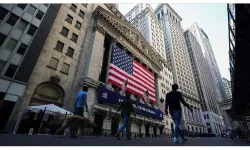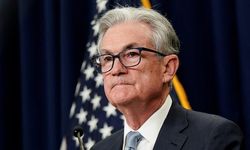Credit card companies in the US are making losses at the fastest pace in almost 30 years outside of the Global Financial Crisis. According to CNBC, the statistic comes from sources at Wall Street giant Goldman Sachs.
Credit card companies' losses bottomed out in September 2021, and the first increases probably started when the US government ended pandemic incentives. However, losses have increased rapidly since the first quarter of 2022. According to Goldman sources, the rate of increase in losses has only been seen in recent history during the 2008 recession. According to the Wall Street giant, the end of losses does not seem imminent.
Losses are currently up 1.5 percentage points from the bottom at 3.63%. Goldman Sachs, on the other hand, predicts that the rate will increase by 1.3 percentage points to 4.93%. The rate comes during a record period when Americans owe more than $1 trillion on their credit cards, according to data from the Federal Reserve Bank of New York.
"We expect defaults to continue to underperform their seasonal averages through the middle of next year," Goldman Sachs Analyst Ryan Nash said in a statement. In our view, most credit card issuers will not see a peak in losses until late 2024 and early 2025."
An unusual dynamic, according to the analyst, is that credit losses are rising outside of the economic downturn.
Nash pointed out that three of the last five credit card loss cycles have been characterized by recessions. The Goldman analyst said that the two waves of credit card losses that did not occur during recessions were in the mid-90s and from 2015 to 2019. Nash uses historical indicators as a guide to see if losses can continue.
"In our view, this cycle resembles the characteristics of the losses in the late 1990s and is somewhat similar to the 2015 to 2019 cycle. These periods saw a period of strong credit growth followed by an increase in losses and a similar pace of normalization in the cycle as the current one."
Historical indicators show that losses tend to peak six to eight quarters after credit growth peaks. This means that we are only halfway along the path of credit normalization. Nash therefore points to late 2024 and early 2025 for normalization.
Nash said that Capital One Financial is the most at risk among credit card providers. According to the analyst, Discover Financial is in second place.
Americans are not paying off their card debt!
According to Goldman Sachs data, Americans rushed to credit cards with the end of pandemic incentives. However, when debts were not repaid, credit card companies faced record losses
Trending news

Snoop Dogg to carry the Olympic torch

Lily James Expresses Admiration for Hailey Bieber’s Rhode Skincare Line

Taylor Tomlinson Will Explore Her Faith and Sexuality on Tour!

'Alien mummy' in Peru raises eyebrows

Scandal in the heart of Europe: Child abuse in a church!

Kamala Harris’ Running Mate: Here’s Who Could Be Her VP After Biden Drops Out And Endorses Her









